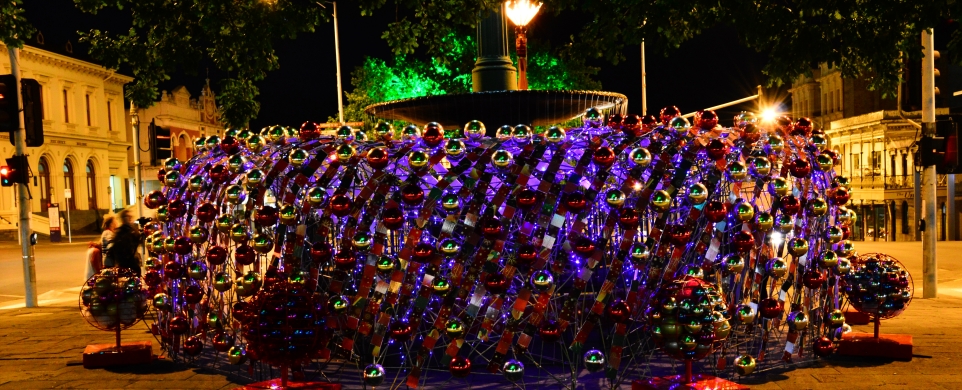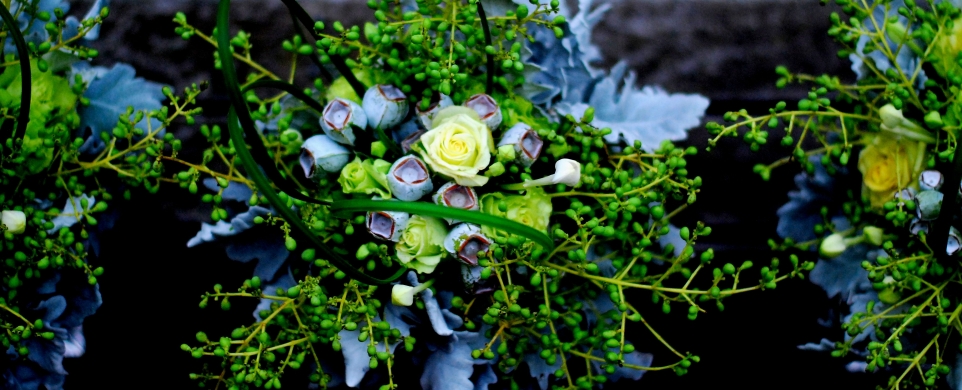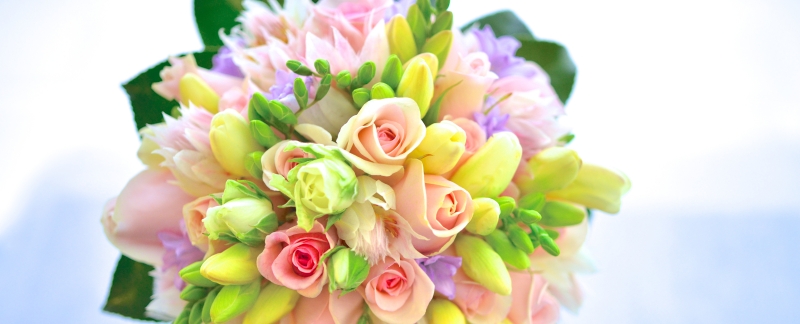How to Learn Ikebana:
For New Ikebana Teachers & Participants in
Zoom Ikebana Dojo Level 3
Shoso Shimbo, PhD
I would like to talk about the learning model that I follow in teaching ikebana for advanced students in my courses and in Zoom Ikebana Dojo. Knowing this model may help those who wish to become a professional ikebana artist but are not sure which path to take.
However, this may not be the right model for everyone. In particular we have to be more flexible for beginners and for those who want to do ikebana as a hobby.
I wanted to write this because I have noticed that there is some misunderstanding about leaning ikebana outside Japan. I think practising ikebana should be like practising Yoga. Most people seem to be doing Yoga for their own well-being, not for external rewards such as fame or money. It’s fine to do ikebana for extrinsic motivation, but the danger is in missing the essence of ikebana.
Poetic / Non-poetic Ikebana
There are two types of ikebana: poetic ikebana and non-poetic ikebana. Poetic ikebana is harmonious in design. It looks lively. We can feel harmony between nature and artist, rather than an artist’s self-expression or the expression of ego. Poetic ikebana is the product of deep meditation. It is also a product of long and sustained practice.
Non-poetic ikebana can be seen everywhere. The works look like they have been made very quickly. They often look unnatural and lack a sense of living energy. Sometimes they may look pretty and smart, but something fundamental is missing – a bit like fast food.
Frustration in Learning Ikebana
If you can tell the difference between poetic and non-poetic ikebana, that is great. You have made a very good progress in learning ikebana. If you feel that your work is not poetic, that can be very frustrating. But that can be a great starting point, if you handle it wisely. You may want to re-evaluate your learning process, and start to create your own “way of flower” to become a better artist and better teacher. You would never wish to become a fake ikebana master.
It seems that some people cannot recognise the difference between poetic and non-poetic ikebana. They seem to be satisfied with making non-poetic ikebana. Probably they don’t feel any frustration. There is nothing wrong with that. In some cases, especially outside Japan, they can be successful in many other ways. They may have many students, a lot of recognition, fame, and awards. But without poetry, something will always be missing.
Learning Model: Learn Ikebana with its Foundation
If you want to make poetic ikebana, however, you have to understand the learning model that takes you there.
Learning ikebana is not like learning some school subjects. Completing the course is generally not enough. The important thing is to really understand ikebana and its creative foundation. This is not written in any textbook. It’s something we all have to discover for ourselves through practice and observation.
Learning the foundation of ikebana is different from learning to comprehend design principles or acquiring special techniques. In Zoom Ikebana Dojo you learn four ikebana elements and four ikebana principles. They are learning at conscious level. Of course they are useful, but what you really need is an intrinsic understanding of how they can help to create poetry in your work.
Two Types of Learning
In short, two types of learning are required in ikebana: learning at a conscious level and learning at an unconscious level. It is the latter that makes your work poetic.
Learning ikebana is similar to learning Zen meditation. In Zen sometimes Koan, questions are used such as: Two hands clap and there is a sound. What is the sound of one hand clapping? My interpretation is that thinking about the Koan intellectually at conscious level helps deepens our meditation at unconscious level. The Koan is an aid, or a supplement to cultivate unconscious learning, which is the true goal of Zen. The details of the Koan are not so important.
Learning about ikebana elements and principles or some techniques are all like Koan. They are great aids to deepen your meditation and cultivate your creative foundation at an unconscious level, which should be the focus of learning ikebana.
Ikebana as Meditation
In essence, learning ikebana means learning meditation. The focus should be on the process rather than product.
However, many ikebana courses allow you to become an advanced student without really experiencing meditation in the process of creation. Nevertheless, understanding and having the meditative experience is crucial, especially in order for advanced students to develop further and acquire the ability to create poetry in ikebana.
There is no quick fix or special training to master ikebana, because those external resources may help you develop skills through conscious learning, but you are the only person who can apply those skills to your own work, the unconscious learning.
Whether you can acquire the unconscious learning depends on your will and attitude, not on your artistic talents. You have to decide to spend time to acquire techniques to control your mind so that you can meditate with the right attitude, in silence and solitude.
When I asked about the quickest way to master ikebana, Mr Katayama simply replied, “practice, practice and practice”. Nothing special. All you need is patience. Time as well as intensity of training is required. Intensity means deep meditation, loving flowers or interacting with the life of flowers.
Effective Learning Methods
A simple exercise is to make one work (can be a basic style) spending at least one hour by yourself. You have to do this in silence. If you feel at the end of the exercise that you spent only 5 minutes or so, that is a good sign. Comments on your work from a teacher would be more meaningful after such an exercise.
Another effective learning method is teaching ikebana. Once you obtained a teaching diploma, seek opportunities to teach. You don’t need to wait until you become confident in your meditation (process) and in your work (product).
It takes for a while to learn how to meditate with flowers, and it is a very slow, gradual and sometime fragile learning process, even if you practice ikebana everyday. It is fragile because it is easily disrupted by our negative mental states.
In fact, making an ikebana work a day is a particularly effective training. It is simple and easy to do. If you decide to do that, however, you will soon find it so hard to continue. It may sound like an easy investment for a big reward, but it is actually the road less traveled.
Nevertheless, making an ikebana a day will eventually become an effortless and joyful daily habit one day. One useful tip is to prepare materials the day before so that you can think about what to make unconsciously overnight. You will realise at a certain time that you can transform your state of consciousness to that of deep meditation as soon as you touch your flowers. Then you can start to see poetry in your ikebana, and ikebana is finally a part of your life.
Quick Ikebana
It is true that some masters make impressive works very quickly in 5 or 6 minutes. Some of them may seem so simple and easy to make. You may think there must be some secrets or magical techniques that you can learn quickly.
I have worked with Mr Kawana. To perform a one hour demonstration, he spent all day for the preparation on the day before. You are not looking at the ikebana created in 5 min, but the products of a hours of meditation and many years training.
Quick ikebana is a byproduct of a long term training and meditation, the foundation of creativity. If you have acquired the foundation, you might be able to make a quick yet poetic ikebana.
But making a quick work should not be a priority for your daily training. Don’t aim to make a shallow pretty work quickly. Ikebana work made without meditation is so obvious and has no poetry. Aim to make a beautiful poetic work that reflects your deep meditation.
Teacher’s Role
No teacher would give answers to the students before they finish their homework. In ikebana doing homework means making ikebana works, including the process of meditation. The answer in ikebana comes from the students, not from the teacher. There is no perfect or right answer for everyone. A teacher’s role is to help students find their own right answers in their development.
When I invited Mr Katayama to one of the Zoom Ikebana Dojo sessions, he showed wonderful examples on how to advise students. When I looked at a students work, I noticed at least three points to improve, and wondered what he would do. After pointing out a few positive aspects of the work, he said, “your mass is not massed enough”. That was one of the points I had noticed, and I realised that it was the one and only “right answer” for the student at her stage of development. Any other advice would be unnecessary at that point. There’s no need to hurry. We are not competing with others, but we are trying to deepen our own meditation. Mr Katayama is a master in teaching ikebana and I have a lot to learn from him. Our learning journey is never over.
Conclusion
Some Western sociologists argue that culture is a field of contest like the economic world, in which interested actors compete to accumulate various types of resources or capital. In culture, actors compete to appropriate cultural capital goods that are socially defined as distinctive and hence lend individuals an aura of superiority.
I admit that learning ikebana has an aspect of the cultural struggle for distinction. We may enjoy it to some extent. If you practice ikebana just to win the struggle for fame or money, however, you may miss the true joy of ikebana. The source of the joy lies only inside you, not outside.
The true master’s concern is whether they can do their best in each work every day, not their reputation or what status they can gain. That’s why they are always humble and polite. You never see arrogant or rude masters in Japan.
What ikebana needs is those who understand the way of the flower, and importance of self-cultivation through meditation. I hope many ikebana teachers will aim to make poetic ikebana and to become a better artist.





























